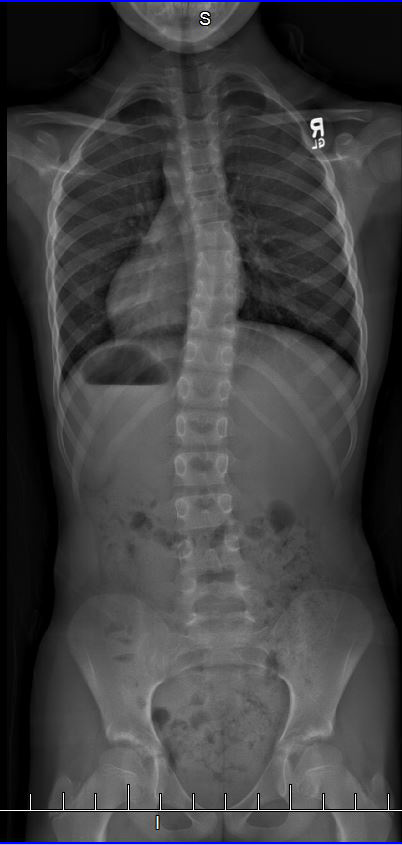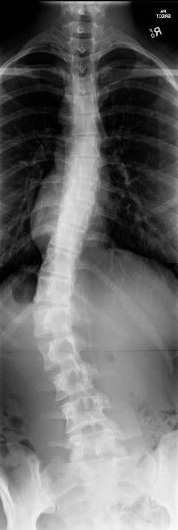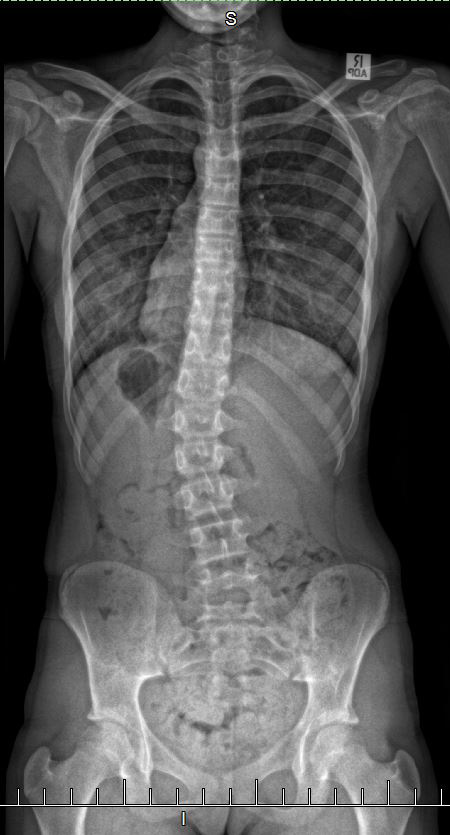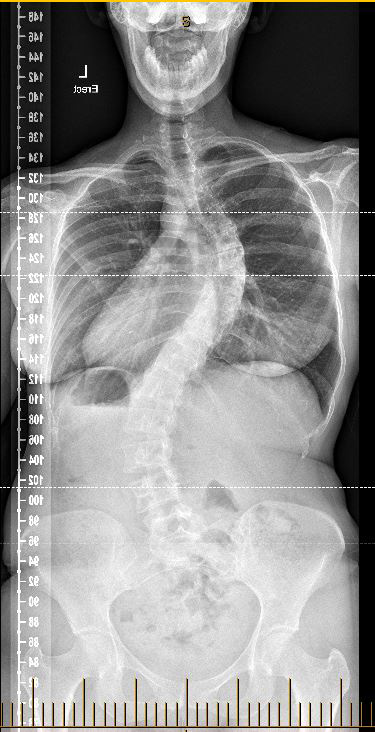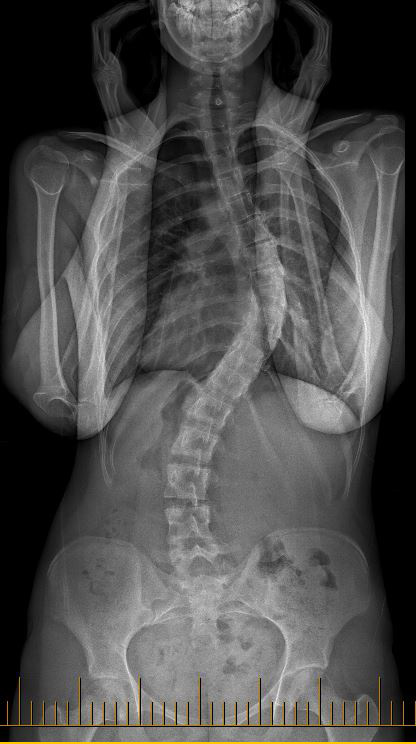The term ‘Idiopathic’ simply means ‘of unknown cause’
Scoliosis is a three dimensional variation of the spine and trunk involving rotations and translations of the involved vertebrae.

Idiopathic scoliosis tends to present in one of the growth spurts of childhood, with the adolescent growth spurt being the most common.
The word ‘Idiopathic’ simply means of unknown cause and the term was first introduced by Kleinberg (1922) and is applied to all cases in which it is not possible to find a specific reason for the curve. In fact this is the case 80% of the time where it appears in apparently healthy children.
It is considered most likely due to a combination of reasons and can progress in relation to multiple factors during any rapid period of growth, or later in life.
IS is named in relation to the age at which it appears. ‘Infantile IS’ is for children less than 3 years of age, ‘Juvenile IS’ for ages 3 to 10 years, ‘Adolescent IS’ for 10 to 18 years of age.
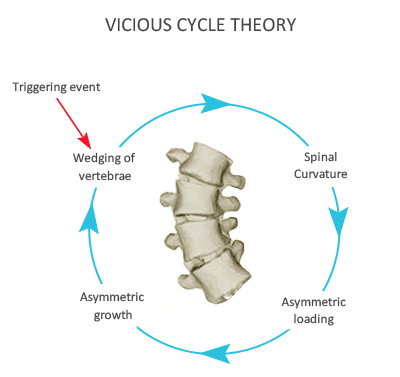

X-Rays usually demonstrate lateral (side) wedging and dorsal (back) wedging of the vertebrae at the centre (apex) of the primary curve. It is unknown what triggers this though there are many hypotheses.
Once this structural change occurs, even slightly, a cycle of asymmetrical loading begins. The uneven distribution of forces is believed to lead to further asymmetric growth of the vertebrae which in turn increase the size of the curve, further increasing the asymmetric loading and hence the cycle continues and self feeds.
It helps to think of the scoliosis curve as having 2 main components, a structural component and a postural component. The ‘structural component’ refers to the bony malformations usually found in the vertebrae at the centre of the primary curve (as described above) and also the soft tissue restrictions that accompany them.
During upright posture, we are under the influence of gravity. The effect of gravity on our spine is to increase its curves. When posturally weak, our spinal curves are exaggerated. In the presence of scoliosis this means the sideways curves and rotations are often more pronounced than they need to be, that is, worse than may be explained by the structural component. This is what we call the ‘postural component’.
Goals for the growing adolescent may be to:
- Halt curve progression
- Prevent surgery
- Improve aesthetics, posture and movement function
- Improve brace effectiveness
- Improve psychological outlook
Physiotherapy Scoliosis Specific Exercises (PSSE) form an important part of our approach to treating scoliosis. If curves are of a certain size and there is enough growth remaining, bracing may also be recommended. In growing children, best results are certainly achieved when scoliosis specific exercises are done in conjunction with bracing however the child must be closely monitored for how well they are coping with everything.
“Looking after the person, not just the curve” (Rigo) is very relevant here.
treatments
Scoliosis Conditions Treated
Other Conditions Treated
